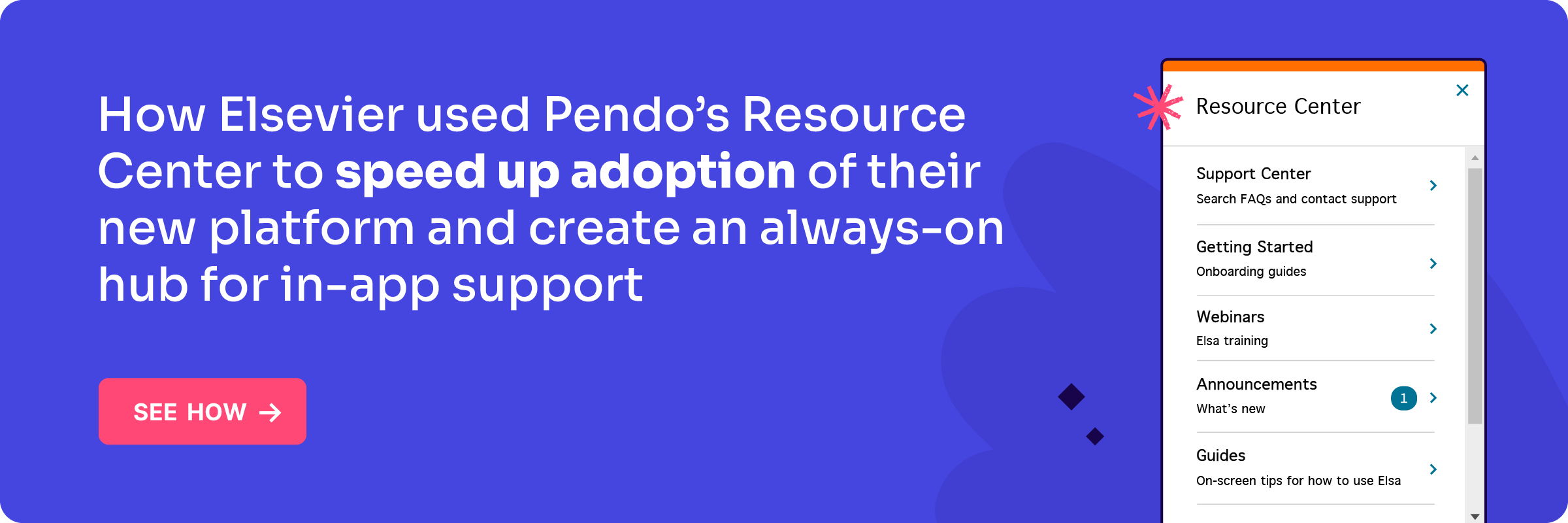Like many things, perfecting your product experience is all about balance—balancing business goals with customers needs, balancing innovation with foundational requirements, and balancing providing users with enough information without overwhelming them with too much information.
Luckily, though, there are ways to master these balancing acts, including one that’s rooted in delivering information to users when it’s most relevant: while they’re using your product.
In-app guides offer a direct line of communication with your users, but they need to be created (and used) strategically. The most impactful in-app guides have a clear goal and, more importantly, are specifically designed to improve your users’ experience—whether it’s by making them aware of a key feature, encouraging them to utilize a certain workflow, or preemptively answering common support questions.
With this in mind, here are four ways to level up your in-app guides:
1. Be strategic about guide placement
Your in-app guides don’t only have to exist in one location. For example, if you put a guide on your product’s homepage to let users know about a new feature, where else might it make sense for this message to live? Remember to consider all of the places in your product where users could benefit from the information in your guide.
Similarly, think of in-app guides as a way to educate users as they need it on an ongoing basis. Build it into your team’s workflow to periodically dig into product data to understand which areas of the product certain types of users need help with the most. From there, you can tailor in-app guides to offer the right information at the right times in the user journey.
2. Personalize whenever possible
Your user base is likely made up of different personas who use (and find value in) your product in a variety of ways. So, why would you serve all of your users the same in-app guide?
Segmentation allows you to deliver messages and information that’s hyper-relevant to different subsets of your user base—for example, if there’s an update that only admins need to be aware of. You can also use in-app guides to personalize users’ experience by letting them choose their next step (e.g. to see a walkthrough of a new feature) or source of information (e.g. release notes or an on-demand resource center).
3. Use guides to iterate and convert
When it comes to in-app guides, iteration is the name of the game. Don’t simply set up a guide and assume it’s going to make an impact. Be sure to measure your guide performance (Are users clicking on the CTA? Are they performing the action the guide is encouraging?) and tweak in-app guides based on your users’ reactions and behaviors.
You can also use guides to help fuel iteration of the product itself. For example, if you learn that users find a certain area of the product confusing via one in-app guide, use a second guide to dig deeper and get to the root of how you can improve this part of their experience. If you have a free version of your product, create in-app guides to raise awareness for additional (i.e. paid) functionality and include an “Upgrade” CTA within the guide to make the conversion path seamless.
4. Leverage a variety of formats
Certain types of in-app guides work best for certain scenarios, but the real magic happens when you utilize multiple guide formats—both to avoid the product experience feeling stale and to ensure you get your message across. For example, if you’re creating a one-time lightbox guide for an important announcement, consider duplicating that information in a tooltip so it’s available whenever users need it.
Whether you’re a seasoned in-app guides expert or are just starting to explore how to leverage guides in your product, remember to always take a strategic approach. Besides, the last thing you want is for an in-app guide to detract from the user experience, when its sole purpose is to improve that experience.


